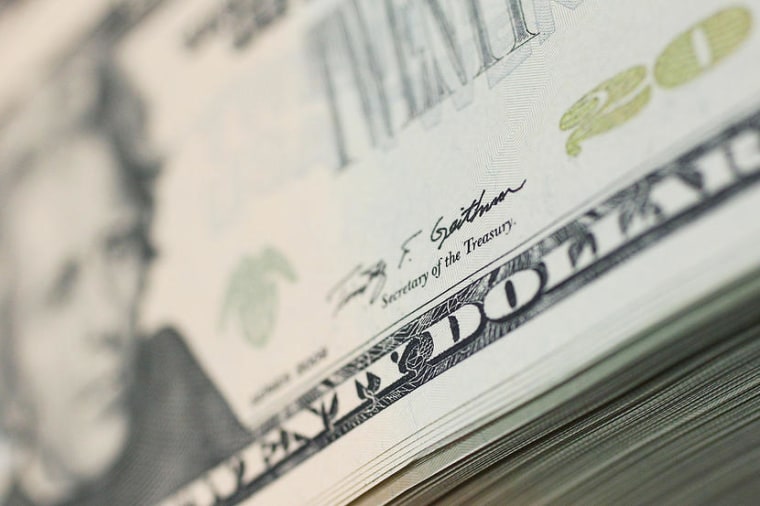With the Trump campaign quickly running out of calendar, it was curious to see the president in California over the weekend. Of course, Donald Trump wasn't in the Golden State looking for votes -- he lost California by 30 points four years ago and has no realistic chance of success there this year -- rather, he was there to raise money.
Except, that's probably not how the Republican operation expected to spend its time in mid-October 2020. Trump officially launched his re-election bid on Jan. 20, 2017 -- literally within hours of his inauguration -- at which point his team started to raise money.
When the general-election season began in earnest in the spring, Joe Biden's campaign was short on funds following the Democratic primaries, while Trump's campaign was flush with cash. Brad Parscale, the president's campaign manager at the time, famously published a tweet in which he boasted about having created a "juggernaut." The missive included a Star Wars gif featuring the Death Star firing on the Empire's enemies.
But as those who saw the movies know, not only did the Death Star belong to the bad guys, it was also destroyed (twice) by the good guys.
Five months later, the Associated Press is reporting on how Team Trump "raised well over $1 billion," but somehow managed to lose its financial advantage.
Trump bought a $10 million Super Bowl ad when he didn't yet have a challenger. He tapped his political organization to cover exorbitant legal fees related to his impeachment. Aides made flashy displays of their newfound wealth -- including a fleet of luxury vehicles purchased by Brad Parscale, his former campaign manager.
Mike Murphy, a veteran Republican consultant and Trump critic, told the AP, in reference to the president's operation, "They spent their money on unnecessary overhead, lifestyles-of-the-rich-and-famous activity by the campaign staff and vanity ads way too early. You could literally have 10 monkeys with flamethrowers go after the money, and they wouldn't have burned through it as stupidly."
Arguably the best example of poor spending decisions is the fact that the president's re-election campaign spent $1.6 million on television ads in the Washington, D.C., media market -- not because Team Trump seriously expected to compete in the Democratic stronghold, but because the campaign team knows the president watches a ridiculous amount of television from the White House.
The point is not to just to marvel at a campaign's ability to plow through $1 billion, without much to show for its efforts. Just as importantly, Team Trump's financial difficulties have real-world consequences: the president's re-election campaign has been forced to scale back its advertising in several key states, not because staffers are confident of success, but because they simply lack the resources.
Complicating matters, there are some lingering questions about funds that were directed to limited liability companies, including Parscale-owned businesses. From the AP's reporting:
Since 2017, more than $39 million has been paid to firms controlled by Parscale, who was ousted as campaign manager over the summer. An additional $273.2 million was paid to American Made Media Consultants, a Delaware limited liability company, whose owners are not publicly disclosed. Campaigns typically reveal in mandatory disclosures who their primary vendors are. But by routing money to Parscale's firms, as well as American Made Media Consultants, Trump satisfied the basic disclosure requirements without detailing the ultimate recipients.
Before Democrats get too pleased by all of this, some caveats are in order. Trump had a financial disadvantage in 2016, for example, but was elected anyway.
What's more, the finances of the president's operation are separate from outside groups that are also spending heavily on the Republican incumbent's behalf, including a pro-Trump super PAC that recently received a $75 million infusion from Sheldon Adelson and his wife.
That said, if the Trump campaign comes up short in two weeks, it's going to face some difficult questions about how it managed to burn through $1 billion and lose.
